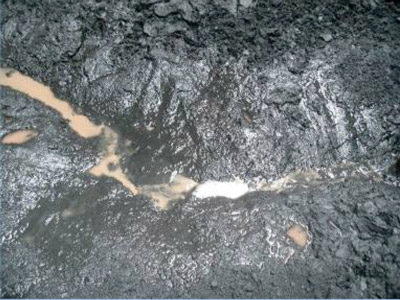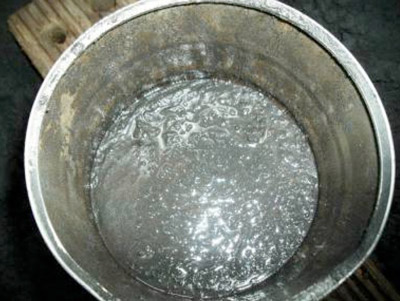Members will be aware of the Association’s previous cautions and advices in respect of iron ore cargoes and the risk of liquefaction, and in particular the previous incidents arising from shipments out of India. While Indian shipments dropped off significantly following the incidents, in part due to Government export restrictions, recently there has been renewed activity in India which may see a renewed increased level of shipments of this cargo. The Association would therefore repeat its previous advices and cautions.
It is, however, not just in India where cargoes have been laden which came with the potential risk of liquefaction.
With thanks to Messrs. SEAsia P&I Services, the Association would like to alert Members to the risk of liquefaction of iron ore cargoes originating from the Philippines. This follows a recent serious matter that SEAsia P&I attended to, and which merits further attention.

Iron ore cargo from the Philippines tendered as category “C” under IMSBC
Miss-declaration of cargoes prone to liquefaction is a common and very serious risk for vessels
In this particular case the master was able to take pictures of the stockpiles of cargo that were due to be loaded on to his vessel, and which the shippers had declared as a category “C” cargo under the IMSBC. The photos showed the cargo to be seriously waterlogged, but the shipper provided a certificate said to originate from a laboratory in a 3rd party country (where there is suitable testing infrastructure) showing a moisture content that was improbably low compared to the actual cargo state. Furthermore no FMP (Flow Moisture Point) or TML (Transportable Moisture Limit) details were provided, which cast further doubt on the veracity of the certificate.
The categorisation of the cargo by the shipper as “C”, in this case, of course meant that they believed that they did not have to provide FMP or TML information, which of course is required in case of category “A” cargoes. Such further information is both more time consuming and costly to obtain. It may also of course reveal that a cargo is at risk of liquefaction and therefore not safe for shipment.
At present there is some confusion as to the proper application of the IMSBC in respect of iron ore cargoes, because the umbrella term “Iron ore” is stated to be category “C”, i.e. : a cargo neither prone to liquefaction nor does it present chemical hazards. Yet for mineral concentrates, including iron concentrate, these are listed as category “A”, i.e. : cargoes which may liquefy. There is, however, no specific category for iron ore “fines” or indeed a specific set of values for what constitutes fines (although typically this is considered to be cargo made up of particles of less than 6.3 mm in size). As a consequence there is room for misunderstanding which may lead cargoes to be categorised as “C” when in fact they should be “A”. The confusion here is compounded because there is no guidance either as to what the position should be where there is blend of “fines” and “lumps” (the latter involving particles large than 6.3 mm in size).
While these matters are not expressly addressed with an individual entry in the IMSBC, the Code does provide that in case of doubt as to the correct “categorisation” then the cargo should be treated as category “A”. Furthermore, under SOLAS Chapter VI Part B, Regulation 6.2 provides that “Concentrates or other cargoes which may liquefy shall only be accepted for loading when the actual moisture content of the cargo is less than its TML”.

Iron ore from the Philippines tendered as category “C’, after being subjected to a “Can test”
In the subject case it was ultimately revealed that the cargo was composed entirely of iron ore fines (with particles smaller than 6.3 mm) and that the moisture content significantly exceeded that given on the first certificate provided by the shipper.
The worst case scenario - which fortunately was not borne out on this occasion - is that the crew and vessel are put at serious risk, and indeed significant loss of life has been attributed to liquefying cargoes over the years. Yet even without tragic consequences, these cases can be very difficult to resolve, especially when the vessel is laden with a cargo that may or has liquefied. Significant losses will follow for the parties involved while the matter is resolved, often this can last weeks and in some cases months, with the vessel unable to sail in the meantime.
Prudent loss prevention is the only way to mitigate against such risks.
Loss prevention advice
- before fixing a vessel to load a cargo with a known risk of liquefaction, carry out suitable due diligence on your counterparties and the proposed shippers;
- if the cargo originates from a country where known risks have occurred, and in particular if it is subject to current or recent severe weather, further due diligence should be carried out in advance;
- the master should be fully up to speed with the applicable rules and regulations, including the IMSBC and SOLAS Codes;
- shippers should produce the required, valid, certification sufficiently in advance of loading as required under the rules and regulations;
- loading should be carefully monitored during the whole period;
- if there is any doubt in respect of / or issue with the:
a) certificates provided
b) cargo stockpiles and / or on barges tendered for loading
c) loading process (watch for “splatter”, pools of water, collapse of cargo mounds, etc.)
d) outcomes of can tests
e) access given to the cargo by shippers to vessel representatives
f) or any other issue giving rise to concern about the safety of the cargo then loading should not be started or, if underway, should be halted until the matter is properly investigated and it can be ascertained independently that the cargo is safe to load; - provide in the charterparty for suitable clauses in respect of testing the cargo and for the cost and time of the same.
If in doubt, the master should feel free to call a halt to operations and should immediately contact the Association’s local correspondent for further assistance.
If members have further queries they are asked to contact the Association.
The Association is grateful to Messrs. SEAsia P&I Services Pte. Ltd., Robert E Gordon and Colin Fordham, for contributing to this Advisory, including permission to re-publish information on shipments from the Philippines as well as the photographic information.